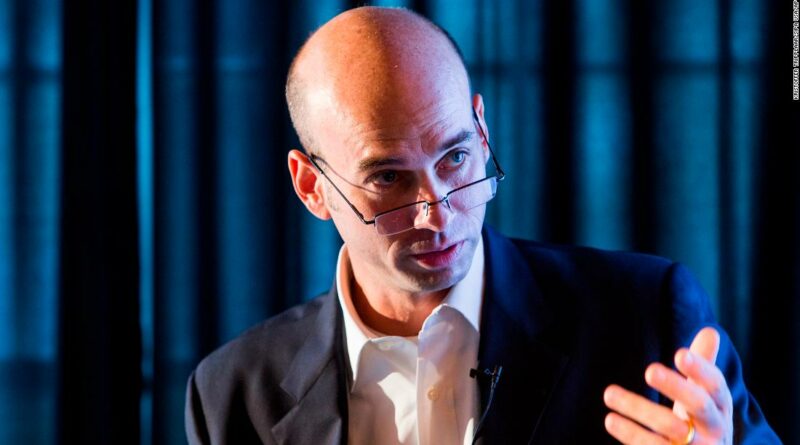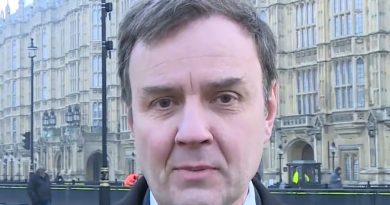Palin's trial against New York Times tests the 'Sullivan standard'
New York (CNN Business)James Bennet, former head of the New York Times editorial section who is being sued along with the paper by Sarah Palin for defamation is expected to take the witness stand Tuesday, an attorney for Palin said in court.
Multiple other Times staffers testified Monday about their roles in the 2017 editorial called “America’s Lethal Politics” which incorrectly claimed that a map circulated by Palin’s political action committee, Sarah PAC, showed crosshairs pointed at several democratic congresspeople (instead of the fact that the crosshairs were over congressional districts, not the people themselves) and indicated that the map incited a gunman who shot Congresswoman Gabrielle Giffords and killed six other people at an event in Arizona. The Times has asserted that it issued a correction hours after it was published.
Jurors on Monday heard from Tim Crawford, the treasurer of Sarah PAC, who testified in a video deposition that Palin was often “hesitant” to ask people for money, especially small donors. Crawford testified about what the Times’ attorney has been calling the “crosshairs map” and that when it was first introduced by Sarah PAC, “we got a huge influx of donations.” Crawford said he didn’t recall criticism surrounding the map when it was first shared publicly.
Phoebe Lett worked as a researcher at the Times when the editorial piece ran and testified that she researched previous editorials that the board had written on topics related to the piece, but that no one asked her to research any role that Sarah Palin’s may have played in the shooting, and no one suggested the editorial would suggest that Palin was to blame for the shooting.
Eileen Lepping, a fact checker for the Times, was pressed by Palin’s attorney during her remote testimony as to why she didn’t check statements that were in the original version of the piece, including the incorrect assertion that the map distributed by Palin’s PAC showed crosshairs over several democratic lawmakers, instead of crosshairs over their congressional districts, as was the case.
“I did the best of my ability with the amount of time I had to do a quick check on the piece,” Lepping testified.
“Who is the person that is primarily responsible that facts in the editorials are accurate?” asked Palin’s attorney Shane Vogt.
“The writer,” Lepping testified.
That writer, Elizabeth Williamson, took the stand last week and went through hours of discussions that took place between multiple Times colleagues about the editorial, and what happened after she turned her version of the piece in just before 5pm on the day the editorial was published. She said other editorial board members would often make changes to pieces, since an editorial wasn’t attributed to one author but was instead from the entire board. She said fact checkers would also review the piece.
“They looked behind you since it’s obviously human to make an error just to check your math and make sure you have all those things correct,” Williamson said.
She testified that her draft of the piece mentioned the map “as an example of that vile political climate that we were talking about” but that she did not say there was a clear and direct link between the map and the shooting that injured Giffords and killed others, and that Bennet made the change that added that line.
The piece published late on the night of the shooting, June 14, 2017, and shortly after, Bennet said the board was getting criticism for saying the attack on Giffords was “incitement.”
Williams said early the next morning after the piece was published Bennet said he was sorry for “my own failure on this” and asked her and a colleague to “get to the bottom” of the error right away.
“It meant we really had to scramble and just find out what the error was nail it down and as quickly as possible correct it,” Williamson testified.
Despite the fact that Williamson was called as Palin’s attorneys’ first witness, her testimony and emails appeared to show that journalists at the Times who were associated with the piece in question did not realize their error, that they were remorseful about it, and that they acted quickly to correct it.
Vogt said in his opening statement Thursday that there was “a history of bias with the Times towards Republicans and Palin herself.” He also alleged that Bennet came up with the idea for the editorial and that he “had his narrative and he stuck to it,” something Williamson’s testimony refuted.
“The reason he didn’t check those facts is because he didn’t care. He had a political narrative. The facts didn’t matter,” Vogt said last week
Williamson testified that she apologized to Bennet for also missing the error and said she should have read that section more closely.
“I had gotten off the phone with James and he was obviously crestfallen that this had happened,” Williamson testified. “I was just kind of feeling for him and thinking about what I could have do so that this mistake didn’t happen.”
She testified that Bennet emailed her saying, “I feel lousy about this one. I just moved too fast, I’m sorry.”
Source: Read Full Article





